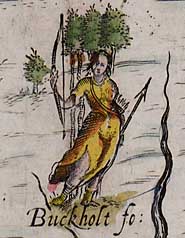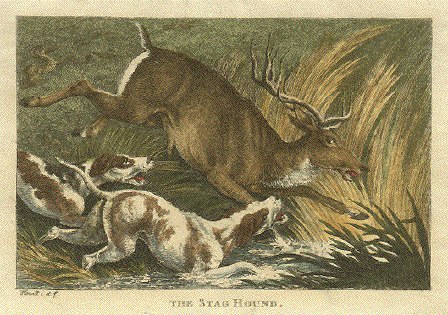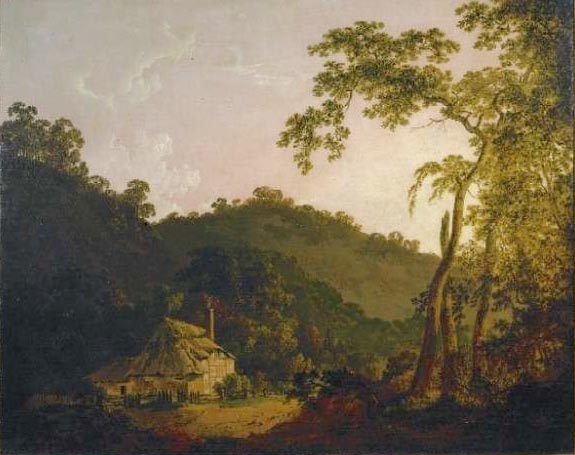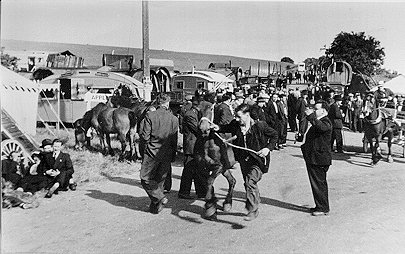|
|
How many forests survived into and through early modern times? Understandably, historians have concentrated on how the interlocking system of land use, law codes, economy, administration and social organization represented by English and Welsh forests operated in its fully-fledged medieval prime, when Norman and Angevin kings are said to have exalted their deer above their human subjects. ‘The history of the English forests can be conveniently divided into three periods, of which the first extended from the earliest times till 1217, the year of the granting of the Charter of the Forest; the second from 1217 to 1301, when large tracts were disafforested by king Edward I, and the third from 1301 to the present day,’ wrote Turner in his introduction to Select Pleas of the Forest. One standard text has a short chapter on the forests ‘in the time of their decay’ after seven on the medieval period; ninety per cent of another is concerned with medieval times; seven-eighths of another with the early Middle Ages. Forests then disappear from our texts. Not only are there no specialist histories of early modern forests: synoptic histories of the period do not treat forests as an entity, or distinguish them from other categories of land use, law, administration or settlement. They are lumped into larger categories. Studies of woodland in general subsume the forests: in all the Victoria County Histories written between 1902 and 1914 they are dealt with under ‘Forestry’, with hunting in a separate chapter. ‘Forest and wood pasture’ has been identified as a type of land use. Forests were just one component of the Crown lands, neglected or dumped into the laps of courtiers. In studies of country sports and the aristocratic paternalism they supported, deer hunting gives way to bird shooting and fox hunting, and hunting of all sorts is shuffled off beyond the margins of country house parties. Deer become perambulating ornaments as the aesthetic appreciation of country parks deflects attention from their sporting uses. Forest Law is neglected for its ‘bastard slip, known by the name of the game laws, now arrived to and wantoning in its highest vigour’. Deer stealing is absorbed into poaching, even though the killing and theft of deer did not come under the Game Laws as the trespass of poaching, but was the much more serious crime of felony. Or it is collapsed into studies of the Black Act [9 Geo.I c.22]. Forests are joined with other wastes and commons as the locations of opposition to enclosure and control, colonization by the poor, riotous commotion, romantic scenery, and by the middle of the nineteenth century, seemly healthy outdoor recreation. Undoubtedly, there are good reasons for this neglect. The grand processes of constitutional and legal evolution, agricultural colonization, industrial development, population expansion, changing cultural consciousness, the navy’s heart of oak, and nation building are more alluring than distinctions within what was being lost through them. Contemporary attitudes appear to have concurred with these judgements. Drayton dealt at length with deer and hunting, and his maps, which are ostensibly sketchy and concerned primarily with ornament, actually plot forests quite accurately; but his text mainly animadverts on the fate of woodland and wild nature generally in the face of human rapacity. Neglect, confusion or carelessness over Howitt's The Staghound, London, 1797 what and where forests (as distinct from woodlands) became progressively more pronounced through topographical writings from Leland to Camden and Fuller, to Fiennes and Defoe, to Young and Cobbett. Those who tried to list forests contradicted each other, and attempts to discover what remained in the late eighteenth century found a patchy morass of equivocal information within which only massive shrinkage and confused decay could be clearly discerned. It took seventeen Reports from the Commissioners appointed to enquire into the State and Condition of the Woods, Forests and Land Revenues of the Crown and other Unimproveable Rents, appointed under an Act of 1786 [26 Geo.III c.87] to show the extent of loss and the depth of prior ignorance. However, it is salutary to remember that c.1500 agriculture was not ‘practiced in this island beyond what is necessary for the consumption of the people … This negligence is, however, atoned for, by an immense profusion of every comestible animal, such as stags, goats, fallow-deer, hares, rabbits, pigs, and an infinity of oxen [and] an enormous number of sheep’. Forests were still considered to be ‘the first marks of honour and nobility and the ornament of a flourishing kingdom’ at the start of the seventeenth century, at the end of which ‘there are more parks and forest in England than in all Europe besides.’ In 1696 sixteen million out of the national total of 39 million acres were still under ‘woods, coppices, forests, parks, commons, heaths, moors, mountains and barren lands’. ‘Deer, fawns, hares, leverets, rabbits and coneys’ may only have accounted for £1.124m out of a total value of animal stock of £19.694m, but much of the latter must also have grazed the 40 per cent of the countryside that was still open. Even Hoskins’ tale of modernization emphasises that the colonization of England’s forest wastes for agriculture was far from complete by the early nineteenth century. Of course, as soon as one starts to look for something in history, one is sure to find it. Instances can be found to support even the most crackpot hypotheses. Perhaps an historical geographer’s urge to bring things together in the places where they happened might seem perverse to proper historians, who deal with them severally in separate thematic studies. Even so, histories of people in all walks of life from the seventeenth to the nineteenth centuries show that forests and ex-forests gave rise to a wide array of scenes and activities that are otherwise linked only by not being civil, polite or commercial; by irrelevance to the rise of capitalism, modernity or the growing influence of women. [Besides hunting, the enquirer encounters riots, commons, courts, religion, and much else.] Were forests progenitors of what, if Langford and most other recent historians of English culture as a whole are right, effectively represented a fully ramified counter-culture? Just as they had epitomised feudalism in medieval times, did forests project it through early modern times towards what Postan once memorably speculated to be its eventual end in the nineteenth century. were forests were complicit in the pre-modern character of E. P. Thompson’s ‘class struggle Joseph Wright: 'Cottage in Needwood', c. 1790 without class’, the ancien regime of Jonathan Clark’s ‘long eighteenth century’ or John Cannon’s ‘Aristocratic Century.’ Was there another early modern England, different from that of the usual histories, unmodernized, unimproved, uncommercial, unfeminized, uncivil and retrospectively unnoticed, with a geography of its own in the forests? Was this a denomination of the true coinage of nationhood, displaced by the forgery of British homogeneity? If forests had been ever-dwindling through continual disafforestation, enclosure and colonization for farming, with the remnants devoted mainly to timber production, the answer would be ‘no’. So how many forests were there, how big were they, and how long did they survive? One of the reasons why forests have been neglected as an historical category in early modern times is that none of these questions can be answered. We do not even know their names. At first sight, the extent of this uncertainty (not to say confusion) is puzzling. Maps of early modern forests are rare, and simply reproduce those compiled for medieval times by Bazeley and Neilson, which plot the areas of each forest. John Andrews’ Map of the Forests of England has been completely neglected by historians, perhaps because it represents the forests simply by name, without even point symbols to fix their locations. In the two most authoritative studies or early modern forests, James’ maps uses point symbols and Grant’s book contains no map. In his lament, Drayton named 78 and mapped rather fewer. According to Rackham there were ‘about 143 Forest in England’. The scholarly lists of James and Grant contain 129 and 69. Bird confidently stated that ‘the royal forests were sixty-nine in number, besides thirteen chases and more than seven hundred parks’; but a sixteenth-century list contains only eighteen royal forests and chases and 67 royal parks. The eleventh report of the Parliamentary Commissioners in 1792 reproduced a survey of crown woodlands made in 1608. It contains 22 royal forests and chases (which can be stretched to 24 by separating out ‘Northamptonshire forests’), and as many parks, though some of the latter are also conflations, and it is impossible to know how to classify the ‘Walds and Lands’ of Staffordshire. Adjacent chapters of a recent book give totals of 80 forests in 1612 and 68 forests, nine chases and 117 parks in 1609. Spelman listed 74 forests and chases in 1664, and St. John named 73 in 1787, 61 of them by then defunct. Uncertainty about the number and extent of forests was not new in early modern times. There is just as much disagreement over the extent, number and names of medieval forests. Bazeley’s map for the early thirteenth and Neilson’s for the early fourteenth century show many fewer forests than those itemized by James or Grant. In total, they contain 90, but have only 48 in common. Forest names disappear and pop up continually from Domesday Book onwards, and every Victoria County History stresses the impossibility of knowing what medieval forests there were. Some of this disagreement can be demonstrated on Venn diagrams which bring together Bazeley’s and Neilson’s medieval listings with what was depicted on Saxton’s and Speed’s county maps at the turn of the seventeenth century and the later lists of Spelman and St John, which are probably the most complete and authoritative early modern statements. Of course, simple graphical presentation inevitably hides the host of arbitrary decisions made in moving from counting to nominal linkage. The resolution of uncertainty leaned towards maximising the amount
Benefield Lawn (wtih deer) on an seventeenth-century map of Rockingham Forest of overlap between lists. Five forests that only appear on Spelman’s list and about which he himself seems to have been doubtful were omitted. ‘Forest’ and ‘chase’ were taken as synonyms, and any that overlapped county boundaries were counted as one. So were alternative names for the same forest, and what seem likely to have been different versions of the same name. If Speed called something a ‘wood’ it was treated as the same as what others called a forest or chase, although if he used a proper name alone, it was not. Within each diagram, the open areas of circles are proportionate to the numbers of forests alluded to by only one of the three authors, shaded ones to the number referred to by two of them, and black ones represent the number included by all three. The totals on all three diagrams are very similar, with an expected diminution from medieval to early modern times. However, the amount of decrease is nothing like as great as we might expect, and the totals are constituted in very different ways. Taken together, the diagrams show that, notwithstanding the attempt to maximise overlap and the confidence of the accounts of forest decay and neglect from the fifteenth century onwards, Speed’s maps depict 44 forests which do not appear on either medieval list. As many are on one or both of the medieval lists, but not Speed’s maps. The correspondence between the three early modern lists brought together on a single diagram is greater. Thirty-five per cent of the forests on any one of them are on both of the others (compared with 23 per cent on the top left-hand diagram), and 44 per cent (compared with 57 per cent) appear on only one of the lists. Perhaps this greater correspondence is to be expected: less time separates the lists, concern with the compilation of records had greatly increased, and spelling and nomenclature had stabilised somewhat since medieval times. Even so, the correspondence between the lists in the later grouping is still perplexingly small. Over one third of all the forests included by any of them appear on only one of the lists, and only 28 per cent appear on all three. St John’s list purports to include all forests that had ever existed, back to medieval times, and it is possible that his ‘resurrection’ of names excluded by Speed or Spelman is responsible for some of the entries unique to his amongst those three lists. However, this does not appear to be so: St John’s list bears much less correspondence to either or both of the two medieval ones than with either or both of the two other early modern ones (32 per cent compared with 44 per cent). Appleby Horse Fair around the middle of the last century. Photographer unknown. Horse-rearing was an important forest pursuit and notable horse fairs grew up on forest fringes Furthermore, it bears just as little correspondence with the forests depicted on Andrews’ almost contemporary map, with exceptionally wide discrepancies in Shropshire, Cumberland and Westmorland. Even where county totals are identical they often comprise different forests: of the 162 forests they contain between them, only 31 per cent are common to both, whilst 17 per cent are exclusive to St. John and 52 per cent to Andrews. At first sight, this wide variability between what purport to be lists of the same things, drawn up at the same or different times, seems incomprehensible. After all, ‘Forests must be mered and bounded with unremoveable Marks, Meres and Boundaries, either known by matter of Record or by Prescription … as if they were enclosed with a Wall’. They could only be abolished by a formal act of disfranchisement (usually termed ‘disafforetation’ or ‘disforestment’) like that which erased Hampton Court Chase in 1548 after Henry VIII’s death. How can objects with such unequivocal existence or non-existence give rise to such varied listings? We must be ready for the possibility that the answer to this simple question will turn out to be very complicated. In pursuing it, we are likely to learn not only why it is impossible to resolve questions of enumeration, but also how forests might survive in far greater numbers than is usually suggested, in full flush as well as after-life, right through early modern times into the nineteenth century. There are three rather different sets of problems. The first concerns the proper names by which forests were identified. The second is more widely ramified, and concerns the of meanings of terms such as ‘forest’, ‘chase’, ‘park’, ‘free warren’ and ‘lawn’: they designated different kinds of hunting grounds, but were not so distinct as is implied by summary definitions based on Manwood and Coke. The third is that ‘disafforestation’ may not actually have meant the end of forests as hunting grounds. |



